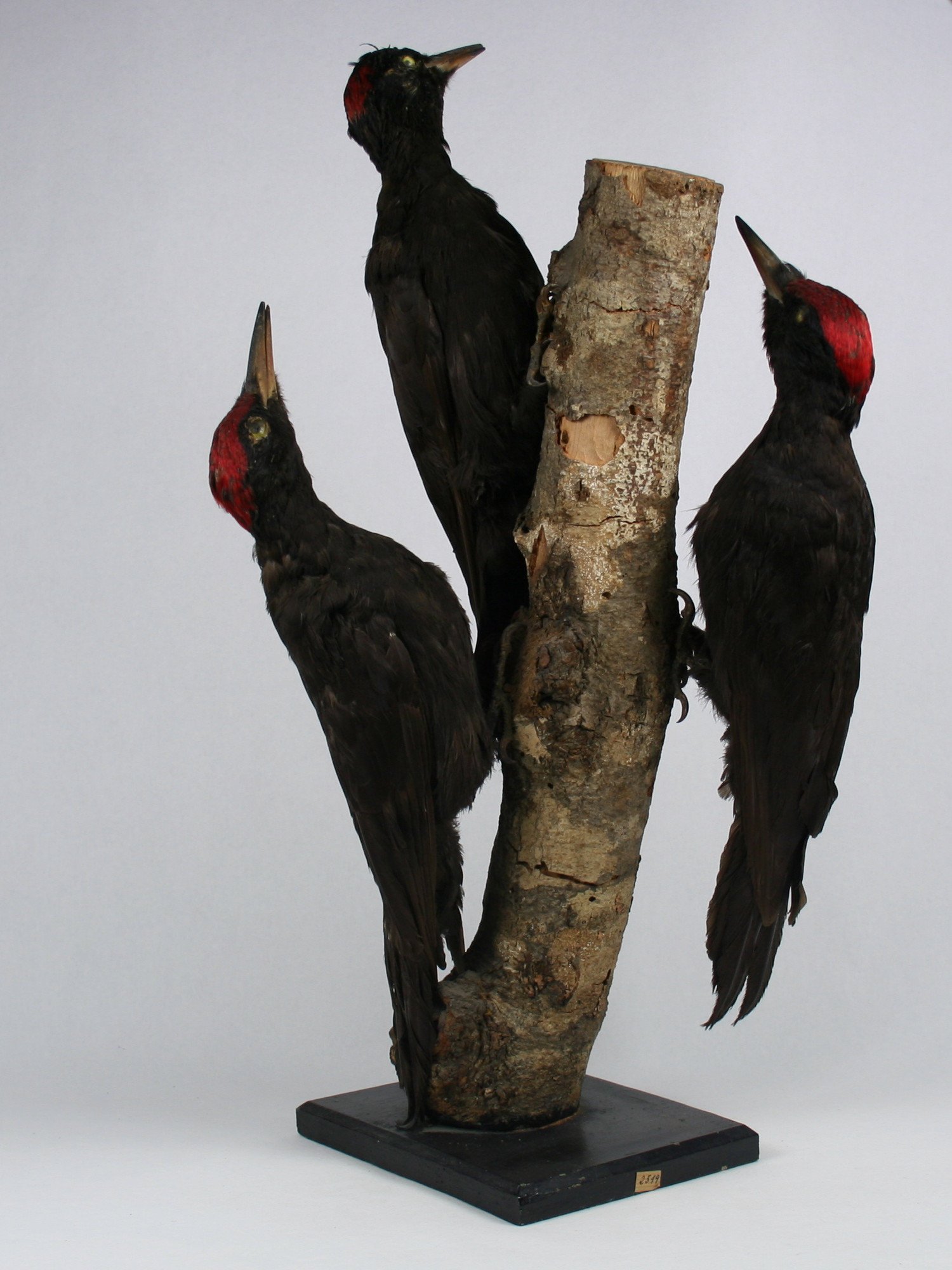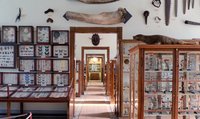Präparat dreier Schwarzspechte (Dryocopus martius), die in Europa und Asien beheimatet sind. Die Bälger mit dem schwarzen Federkleid und rotem Kopfgefieder sind seitlich an einem kräftigen Ast angeordnet und blicken nach oben.
Die Präparate stammen vermutlich aus der Sammlung des Greizer Ornithologen Carl Ferdinand Oberländer, der seine Sammlung einheimischer und exotischer Vogelarten im März 1840 an das Naturalienkabinett verkaufte. Im historischen Verzeichnis sind drei Tiere gelistet als "Picus martius L". Oberländer hatte regelmäßig Lieferungen von exotischen Vogelbälgern erhalten, die er schließlich selbst präparierte. Einzelne Tiere bezog Oberländer zuweilen über den Ankauf von Dubletten etwa aus dem Naturkundemuseum Berlin.
en

